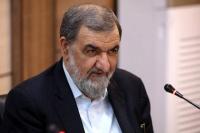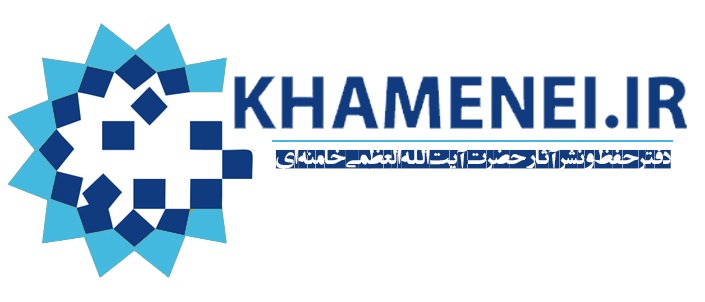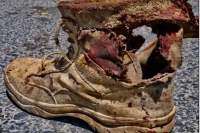
A ranking member of the US marine troops deployed in Afghanistan told FNA on Saturday that the Pentagon made the decision to send a major part of its light and semi-heavy weapons systems and military equipment to the Syrian rebels along with its pullout from Afghanistan when the former US Defense Secretary, Leon Panetta, was still in office.
"The decision to send our arms and weapons systems in Afghanistan to the rebel groups in Syria was originally made when the former US Secretary of Defense was in his final days of office, yet the Pentagon has also received the approval of the new Secretary, Chuck Hagel, as well," said the source who asked to remain anonymous due to the sensitivity of his information.
"One of these cargos consists of the light and semi-heavy military tools, equipment and weapons that the US army has gathered and piled up in Kandahar Base and plans to send them to the rebels in Syria in the form of several air and sea cargos and through Turkey and specially Jordan," he explained.
"These weapons and arms systems include anti-armor and missile systems, rocket-launchers and rockets and tens of armored Humvees," the source added, explaining that senior war strategists in the Pentagon believe that they can change the scene of the war in Syria in the interest of the rebel groups with the help of these cargos, specially the shoulder-launched missile systems and the multipurpose Humvee vehicles.
The High Mobility Multipurpose Wheeled Vehicle (HMMWV), commonly known as the Humvee, travels as fast as 150 kilometers per hour under different weather conditions and in various geographical climates, and various types of machineguns, rocket-launchers and weapons systems can be mounted on this vehicle.
HMMWVs serve as cargo/troop carriers, automatic weapons platforms, ambulances (four litter patients or eight ambulatory patients), M220 TOW missile carriers, M119 howitzer prime movers, M1097 Avenger Pedestal Mounted Stinger platforms, MRQ-12 direct air support vehicles, S250 shelter carriers, and other roles. The HMMWV is capable of fording 2.5 ft (76 cm) normally, or 5 ft (1.5 m) with the deep-water fording kits installed.
Optional equipment includes a winch (maximum load capacity 6,000 lb (2,700 kg)) and supplemental armor. The M1025/M1026 and M1043/M1044 armament carriers provide mounting and firing capabilities for the M134 Minigun, the Mk 19 grenade launcher, the M2 heavy machine gun, the M240G/B machine gun and M249 LMG. The M1114 "up-armored" HMMWV, introduced in 2004, also features a similar weapons mount. In addition, some M1114 and M1116 up-armored and M1117 Armored Security Vehicle models feature a Common Remotely Operated Weapon Station (CROWS), which allows the gunner to operate from inside the vehicle, and/or the Boomerang anti-sniper detection system.
Humvees can climb slopes 80 degrees upward and this very specific feature along with their high speed has made them a vehicle of choice for the US military in Afghanistan's mountainous areas.
The New York Times said in an article in August that "(US) troops are already departing, and military planners are carefully calculating how to extricate the equipment smoothly. In all, officials estimate, they will have to wrangle 100,000 shipping containers of material and 45,000 to 50,000 vehicles like tanks and Humvees from all across Afghanistan".
Lieutenant Opperman, a Marine from Pittsburgh who is known here as the Queen of the Sort Lot, runs one of the big receiving yards, a dusty, 12-acre lot that is taking in superfluous equipment as (US) bases shrink, close or are transferred to the Afghan forces all over the Southwest of the country.
He told the NY Times "we take it, and we figure out where it has to go".
The NY Times article says "commanders hesitate to discuss openly the details of what is known as the retrograde of equipment back to the United States".
In the same article Col. Jeff Hooks, the senior Marine logistics officer in Southwest Afghanistan, said "the Marines' Afghan withdrawal would be more complicated than their Iraq pullout, even though they had collected less equipment in Afghanistan."
"… the Marines have mostly flown excess equipment out at a rate of 18 to 24 flights a day. These went directly to the United States or to ports in Kuwait, Oman or elsewhere on the Arabian Peninsula," he added.
According to a timetable set by President Obama, the United States withdrew about 23,000 troops from Afghanistan by October, leaving about 68,000 American troops. There are about 13,000 Marines, down from about 20,000, and the United States said publicly that this number fell to around 7,000 by October.
In the Southwest, the number of coalition bases is falling to about 70 from 214 in March, 2012.
As the US continues its pullout from Afghanistan, rebels in Syria have failed to make any more advancement and the US, EU, Saudi Arabia and Qatar were forced to soften their tone on the future of the almost two-year-long conflict in the country after they found that the war of attrition has rather worked in the interest of President Bashar al-Assad and his troops.
This, military experts say, has apparently made the US change the war strategy in Syria and open new fronts in the country.
The US and its allies have been sending most of their arms cargos to the rebels through Turkey, which neighbors Northern Syria. Just last week a Libyan member of the al-Qaeda disclosed that France has supplied the rebel and terrorist groups in Syria with Russian Igla anti-air missiles and even trained them how to use these systems.
"Qaddafi's regime had good relations with the Russians and purchased various weapons from them, including Igla anti-air missiles, which are similar to the US Stinger anti-air shoulder-launched missiles," Othman Trablosi said on Wednesday.
He said that after Qaddafi's regime collapsed and rebels came to conquer its army's weapons and ammo caches, the French army which supported the Libyan rebels with logistical and intelligence backups, collected 232 Igla missiles which were in the hands of the Libyan fighters who were busy with fighting Qaddafi's supporters.
"After that the French found some of the Libyan army officers who had been trained to use Igla missiles and in September 2012 they used these offers for training a number of al-Qaeda terrorists who ran operations in Syria," Trablosi explained.
"Then" he said "the French transited these al-Qaeda members and the Igla anti-air systems from Benghazi to the Southern provinces of Turkey on a Bulgarian cargo plane and then ferried them across the border into Syria."
But after the US witnessed that the Northern front has failed to overpower the Syrian Army, it has now changed strategy to intensify arms aid to different rebel groups across the country to open new front, specially in the South.
Liz Sly and Karen DeYoung in an article in Washington Post in late February reported an influx of heavy weaponry by outside powers to Southern Syria to arm the Free Syrian Army.
"The new armaments, including anti-tank weapons and recoilless rifles, have been sent across the Jordanian border into the province of Daraa in Southern Syria in recent weeks," the Washington Post article quoted Arab officials as saying.
The article quoted the same officials as saying that the arms include "heavy weapons supplied by outside powers to the rebels battling to topple President Bashar al-Assad".
The officials declined to identify the source of the newly provided weapons, but they noted that the countries are those which are "most closely involved in supporting the rebels' campaign to oust Assad".
"They include the United States and its major European allies, along with Turkey and the United Arab Emirates, and Saudi Arabia and Qatar, the two countries most directly involved in supplying the rebels. Security officials from those nations have formed a security coordination committee that consults regularly on events in Syria," the Washington Post article quoted the officials as saying.
"The idea was to get heavier stuff and intensify supply" said an Arab official who spoke on the condition of anonymity because of the sensitivity of the operation, according to Washington Post.
Louay al-Mokdad, the political and media coordinator for the Free Syrian Army, confirmed that the rebels have procured new weapons donated from outside Syria, rather than bought on the black market or seized during the capture of government facilities. But he declined to say who was behind the effort.
Another coordinator for the Free Syrian Army, whose units have received several cargos of these new arms supplies since in mid-February, said "the goal of the supplies also is to shift the focus of the war away from the North toward the South and the capital, Assad's stronghold."
"The shift was prompted by the realization that rebel gains across the North of the country over the past year were posing no major threat to the regime in Damascus," Saleh al-Hamwi, who coordinates the activities of rebel units in the province of Hama with others around the country, told Washington Post. "But the province of Daraa controls a major route to the capital and is far closer," he added.
"All we can say for sure is that there are some new weapons coming across the border in the South, they are coming with high secrecy and they're only going to groups that they want," he said.
Saudi Arabia, a main backer of the terrorists not just in Syria but across the globe including the Al-Qaeda which brought the New York twin towers down on September 11, 2001, is the main US ally in the region, and according to Col. Jeff Hooks, is a main destination of the US weapons cargos flown out of Afghanistan.
The Washington Post article further said that there has been a rise in the smuggling of small arms, mostly automatic rifles, across Jordan's border with Syria.
Despite the secrecy however, the influx was publicized this month by Eliot Higgins, a British blogger who uses the name Brown Moses and who tracks rebel activity by watching videos rebel units post on YouTube.
In a series of blogs, he noted the appearance in rebel hands of new weapons that almost certainly could not have been captured from government arsenals.
In a sign of how organized the effort is, he said, one of the recent videos shows members of the local Fajr al-Islam brigade teaching other rebels how to use some of the new weapons.
The items appear to have already begun influencing the course of the war, he said. They have contributed to a sharp escalation of fighting in the Daraa area this year in which opposition fighters have overrun government bases, including several checkpoints along the Jordanian border, a key but long-neglected front.
Jeff White of the Washington Institute for Near East Policy says he also noted the unexpected appearance of the weapons in rebel videos several weeks ago.
It seems unlikely, however, that the influx will be enough to decisively influence the outcome of a raging battle that continues to embrace a broad spectrum of tactics and weaponry, from suicide bombs to Scud missiles, experts say.
Joseph Holliday of the Institute for the Study of War also said that there have been scattered sightings of the new weapons in other parts of the country, including Aleppo as well as Idlib and Deir al-Zour.
Although plans for an offensive on Damascus are being readied, the rebels still lack sufficient firepower to take on government forces there, said Mokdad of the Free Syrian Army.





































